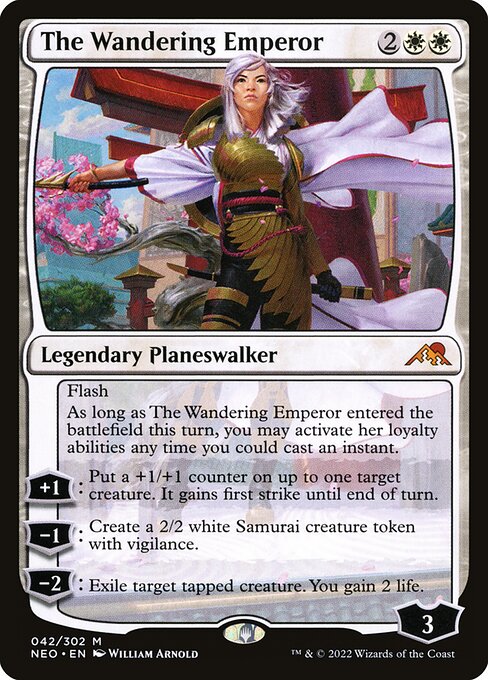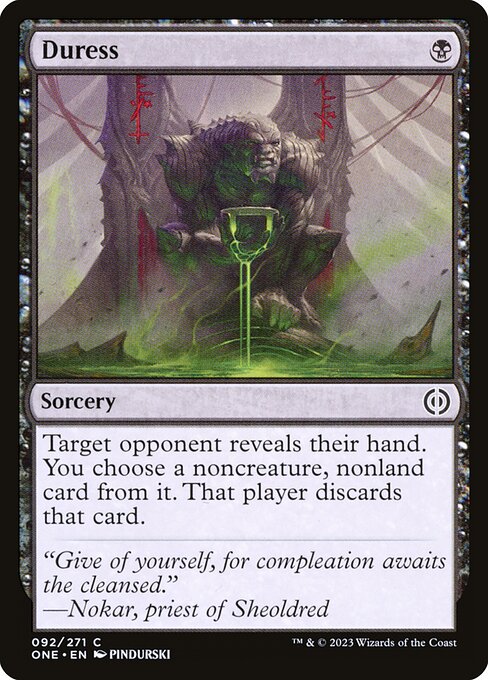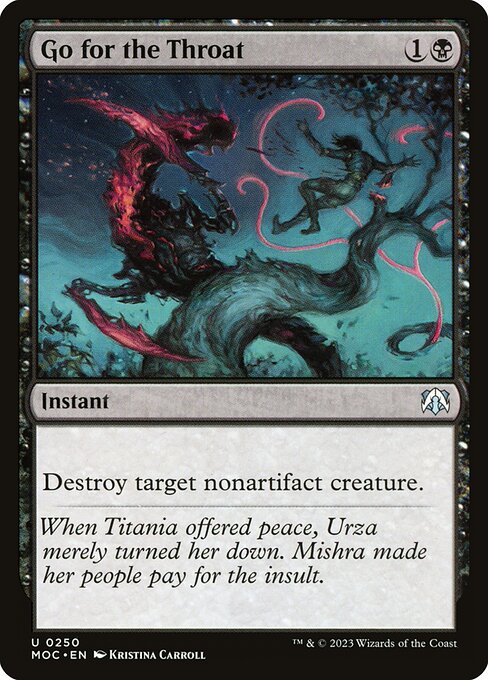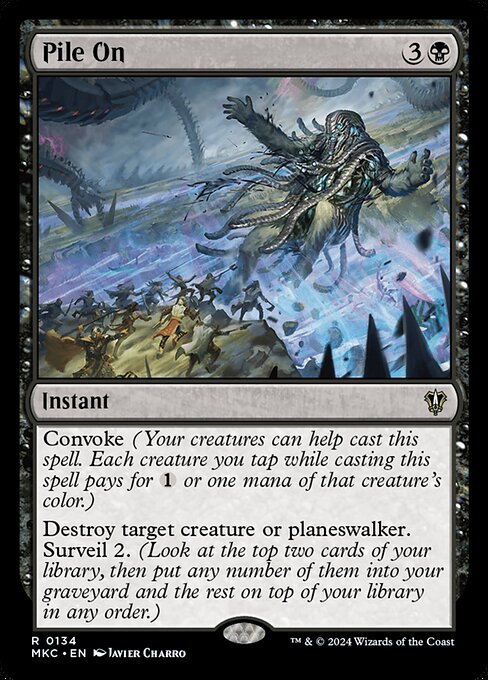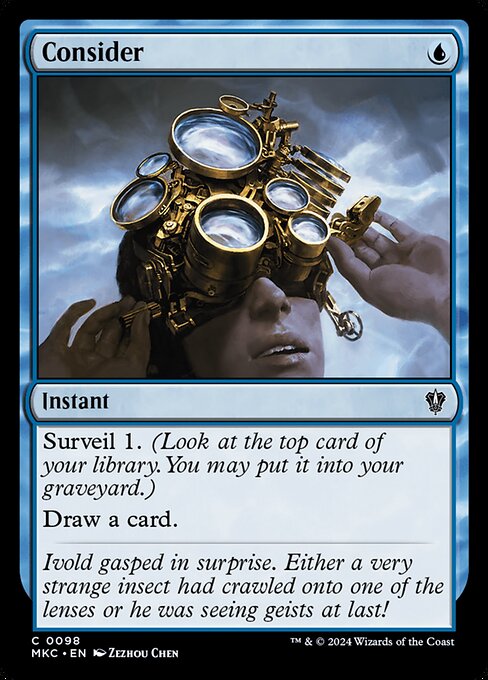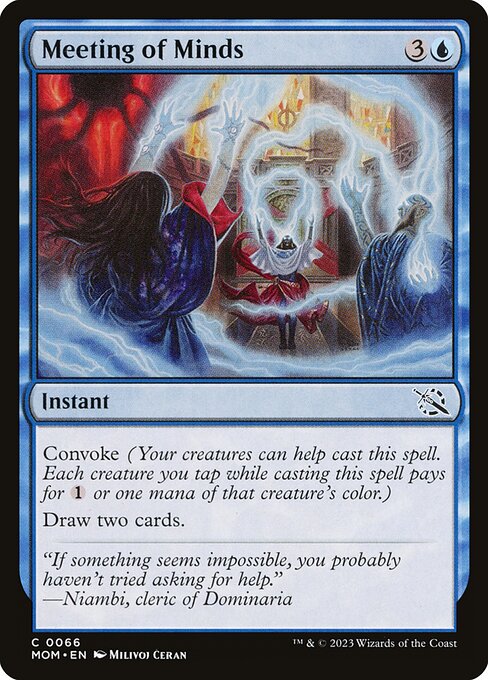Table of Contents
If you’ve read my article on many faces of Monastery Mentor, you know how excited I am that he’s now Standard legal. Having played him in Pioneer and Modern, I know how snow-bally the card is. It has to be answered basically on the very turn it’s played, otherwise it spirals out of control. It can also be deployed on a later turn and immediately be followed by a flurry of spells to generate board presence. The whole is trying to take full advantage of Mentor and his Monks.
This deck is essentially an Esper control-midrange deck that can turn the corner very fast as soon as Monastery Mentor comes into play. It also capitalises on the convoke mechanic to pull ahead and flood the board even more.

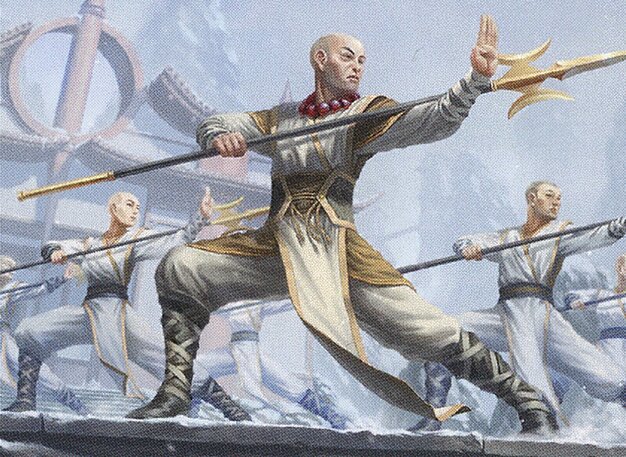

Planeswalkers (3)
Instants (20)
Sorceries (4)
Enchantments (4)
Lands (24)
60 Cards
$579.38
Sideboard
15 Cards
$52.57
If you want to see the deck in practice, check out my latest video on YouTube! There are even more Standard videos there, so make sure to visit the channel.
Deck Tech
Threats
Let’s start with the namesake and break down why exactly it’s so scary. There are a few aspects that we need to talk about. To begin with, its own prowess trigger. It’s a 2/2 trigger which is quite uninspiring – out of the box, it dies to Play with Fire or Cut Down. However, prowess mitigates this downside. When deploying it on turn 4+, you can always respond to cheap removal with your own spells like Consider, triggering prowess. Once it becomes a 3/3 it dodges both of the aforementioned removal pieces. On top of that, it helps it fight in combat. You don’t want to put him at risk but sometimes you need to close games fast and Mentor will get into the red zone. The opponent will have a tough time deciding how to block, as you’ve got 20 instants in the deck that could be cast and grow Mentor. With so many cheap spells especially, we could trigger Mentor multiple times within a single combat step.
The real meat and potatoes of Monastery Mentor is the second trigger. Whenever a noncreature spell is cast, you get a 1/1 Monk with prowess. If you jam Mentor on turn three and it survives, on turn four you can cast 2-4 spells to immediately flood the field. Such an army can be used offensively or defensively. It can act as a way to clog up the ground and stabilise your situation. It’s going to be difficult for the opponent to break through unless they get rid of Mentor first. Sometimes though you’ll want to put the pedal to the metal. With a full squadron of Monks, it’s going to be tough for the opponent to block all of them. Every turn you’re going to be casting more spells, possibly removing blockers and growing the army further.
If that were all though, it’d just be a three-mana Third Path Iconoclast, which it certainly is not. Those created Monks have prowess as well which makes all the difference. While you can set up your Mentor or Iconoclast on a later turn to be able to resolve a bunch of spells, you have to be ready for them to be killed pretty soon anyways. If Iconoclast leaves three tokens behind, it’s fine but far from great. However, three Mentor tokens can dominate the field all on their own. They are a headache to deal with in combat and can become 3/3s or 4/4s seemingly out of nowhere. The fact that Mentor leftovers are still great makes transitively Mentor great. The usual play pattern with Mentor alive is:
- Play Mentor
- Make tokens on the subsequent turn
- Attack for (almost) lethal the next turn
To sum up, the fail rate is still fine, as he leaves behind solid creatures and when it does survive, the game is over within the next 2-3 turns.
The best white planeswalker in Standard hands down. It performs multiple roles at the same time.
First, it’s a removal on a stick. You can get rid of an opposing threat, regardless of its size. It can be as small as Feldon, Ronom Excavator or as big as Vorinclex, it provides a safety net against creatures that the opponent presents you with. On top of that, you get to gain two life which might be the difference between winning or losing against Mono Red Aggro or Black decks with Sheoldred, the Apocalypse – after all, it’s one more draw step. Against those aggressive decks, it virtually blanks a possible Play with Fire. If that wasn’t enough, this ability *exiles*. It’s relevant against numerous cards in the format that interact somehow with the graveyard such as Bloodfeather Phoenix, Phoenix Chick, and Squee, Dubious Monarch.
In addition, it provides a steady flow of Samurai tokens. Vigilance makes it so that you can keep attacking but also have blockers for the opponent’s swing-back. It also means that it can always leave something behind it even if it eats a removal spell. Those tokens can be deployed in combat at instant speed to have surprise blockers.
The ability to put a +1/+1 counter on a creature and give it first strike does come up. In most cases it’s going to be used as a means to give Emperor more loyalty and later minus it. However, it can be relevant when done it combat to grant your creature first strike and win a trade.
To top if all off, it’s a noncreature spell that triggers Monastery Mentor.
Another token-maker working in tandem with The Wandering Emperor and Monastery Mentor. Wedding Announcement makes a token for three turns and then grants every threat a power toughness buff permanently. It turns Samurais into 3/3s, Humans into 2/2s and Monastery Mentor tokens into base 2/2s. It’s even better in multiples, as you get twice as many tokens and potentially twice as big sizing buff.
I like running out Wedding Announcement on turn three as it’s essentially removal-proof and drop Monastery Mentor a bit later. This way you can really put the opponent into a squeeze.
A card that needs no introduction. Sheoldred, the Apocalypse is a staple in black decks and for a good reason. Being a 4/5 means that she blocks essentially anything that’s attacking. Deathtouch ensures that any contact with her is fatal. However, it’s the triggers that make it so dominant. It’s a static clock even if there is a board stall, since the opponent will keep losing life every single turn and get additionally punished if they use card draw to find an answer.
It’s also a stabilisation tool life-wise, as you also get two health points back every single turn. In the deck, there are draw effects which can result in you gaining 2-6hp in a turn. It can blank entire combat steps.
Although she does not work with the token, go-wide theme she’s good enough on her own to warrant a few copies in the deck.
Interaction
When I see Esper, I think interaction. It’s no different here. We want spell to trigger Mentor but also interaction to clear the way for our threats to close the games.
Duress has been exceptionally good for me. Most of the best cards in Standard can be taken with Duress for instance Fable of the Mirror-Breaker, Wedding Announcement, Invoke Despair, all Planeswalkers, and now also all Battles. You don’t even have to play it on the first turn. When playing against a black deck, you can play it on the turn before they’d get to play Invoke Despair and thwart their plan.
On top of that, Duress gives you perfect info on what the opponent’s plan is going to be. Whether they drew an aggressive hand with Bloodtithe Harvesters or maybe slower and grindier with Reckoner Bankbuster. Such info is invaluable.
Last but not least, you can take the opponent’s removal that was waiting for Monastery Mentor. You clear the way for it and go to town. If they have multiple pieces of removal, you can change the strategy or try to brute force your way through all the interaction.
All in all, Duress has been an all-star. While usually played in the sideboard, I’ve really liked it here in the main deck.
Now onto removal. There is nothing revolutionary happening here. Cut Down is as efficient as it gets and impedes early aggression from the opponent. This Esper shell has so many tools in the late game that it does not want to get cheeseed out by the opponent attacking from the very first turn.
I will be happy to kill any two-drop presented just to slow things down. Being one-mana is also very convenient with Mentor who really enjoys cheap spells.
Nigh-unconditional removal spell that gets rid of almost anything thrown at us. There have been very few cases where Go for the Throat would fall short due to its restriction. However, it might come up especially against Reckoner Bankbuster or prototype creatures.
New removal spell from March of the Machine. While Go for the Throat was almost perfect, this is the best removal in the deck and maybe in the format – I am calling it. In this deck, I have frequently cast it for two mana or less and at that rate it’s actively absurd. Not only does it kill *any* creature with no strings attached, it can also remove any *planeswalker*. On top of that, this Hero's Downfall on steroids has surveil 2 on it, providing you card selection. It allows you to sculpt next few turns and help find more removal or threats, depending on the circumstances. It’s of course instant speed to make it even more busted. And as mentioned before, it can be played for 3, 2, 1, or sometimes even 0 mana, when Sheoldred, the Apocalypse helps convoke it.
This card is an all-star in this strategy thanks to all the tokens floating around, waiting to convoke it.
I wanted some countermagic in the deck to fight on the stack. This slot could be Make Disappear, Spell Pierce, Surge of Salvation or Shore Up. The idea is to have a way to protect your key threats like Sheoldred, the Apocalypse or Mentor. Make Disappear has the added bonus of being able to cleanly answer an expensive spell that the opponent is presenting such as Invoke Despair or The Wandering Emperor.
With an increase of noncreature decks, I could also see trimming Go for the Throats in lieu of such countermagic effects.
Card Draw and Card Selection
We don’t want to get the wrong-half problem too frequently and draw only removal against control or expensive spells against aggro. This is where card draw and card selection comes in.
Consider is most probably the best cantrip printed in the recent years and it’s been widely played in Historic, Explorer, Pioneer, and even Modern. It digs two cards deep which is enough for it to be a staple. In this shell specifically, it triggers Monastery Mentor instant speed which bumps up the grade on this card from B+ to a solid A.
One key tip is that you don’t have to fire it off at the first opportunity. Sometimes it’s better to wait with it to trigger a later-deployed Mentor and immediately get a token.
One of my favourite cards in the entire set. If you like playing Consider for one mana, how about straight up drawing two cards for the same cost? At two mana this card is already busted, competing with Expressive Iteration as the best draw spell. If you can pull it off for 2 or less, you’re in an excellent shape.
There will be games where you fire it off for more than two mana, but that’s far from embarrassing.
In this deck, you want to pull ahead at some point, having traded 1 for 1 with all the removal and countermagic. Meeting of Minds is the best tool to do so in such a token-centric strategy.
Best of One



Planeswalkers (4)
Instants (20)
Sorceries (4)
Enchantments (4)
Lands (24)
60 Cards
$608.88
The version of Best of One is a tad different from the Best of Three version. I put more emphasis on cheap interaction and The Wandering Emperor, foreseeing more aggressive decks in that format.
Budget
Any three-colour deck will have trouble adapting to a limited budget. On top of that, all the threats and even some interaction are rares or mythics. Unfortunately, it’s impossible to budgetify this shell.
Matchups and Sideboard Guide

Grixis Midrange
| IN | OUT |
|---|---|
| +2 Teferi, Temporal Pilgrim | -3 Cut Down |
| +3 | -2 Duress |
A very value-oriented matchup. I side in more sticky threats that cannot be killed by Go for the Throat, Cut Down, or Abrade. In this matchup, I will always play Monastery Mentor late to immediately follow it up with spells. Mentor tokens nicely blank the removal part of Invoke Despair.
Treat this match up as a midrange/control mirror and try to squeeze as much value out of your cards as possible.
Mono White Midrange
| IN | OUT |
|---|---|
| +2 Teferi, Temporal Pilgrim | -4 Duress |
| +3 | -3 Cut Down |
| +2 Disdainful Stroke |
This matchup is much more creature-centric compared to Grixis Midrange. My instinct tells me to side in Depopulate, but in practice, it’s the mono white player who will be siding in mass removal to contain Monastery Mentor. Therefore, I leave my own mass removal in the board. We have removal for everything they do and they mainly have sorcery speed to contest Monastery Mentor.
I like this matchup thanks to the limited ways Mono White can interact with us.
Esper Legends
| IN | OUT |
|---|---|
| +3 Depopulate | -4 Duress |
| +1 Teferi, Temporal Pilgrim |
Now we get to even more creature-oriented games. They will present us with a creature threat every single threat. Depopulate is going to shine here. Monastery Mentor will act a bit more as a way to clog up the battlefield rather than go all-in on attacks. On top of that, the opponent might not expect a mass removal spell from a Mentor deck.
Selesnya Toxic
| IN | OUT |
|---|---|
| +3 Depopulate | -4 Duress |
| +3 Temporary Lockdown | -2 Make Disappear |
We go all in on removal. Mentor with Depopulate and Temporary Lockdown make sure that we don’t ever have to worry about Skrelv's Hive. In this matchup, Monastery Mentor is almost certain to survive so the games will sometimes revolve fully around it. Use the tokens to chump early and often to stay at a high life total and low poison count.
Esper Mentor Mirror
| IN | OUT |
|---|---|
| +2 Teferi, Temporal Pilgrim | -3 Cut Down |
| +3 | -2 Duress |
This mirror match can be very swingy as both players have interaction, escalating threats, and card advantage. One of the players might side in Depopulate to throw off the dynamic completely. I’d rather execute my own plan than try to adjust to the opponent’s that much so I leave Depopulate in the board. The games will play out very similarly to Grixis Midrange.
Tips and Tricks

- You can kill your own tapped Monk just to trigger Monastery Mentor and get an untapped Monk. This trick is useful when you need to block but your piece of removal does not kill the attacking creature.
- You can use The Wandering Emperor‘s -2 ability on your own creature to gain life.
- You can play The Wandering Emperor on the opponent’s turn in combat to trigger all the Monks, but wait with using it until you know what you want to do with it. You don’t need to activate any abilities right away.
- You cannot use casualty 1 on Make Disappear to sacrifice the same token you’d create off Mentor. You have to have the creature to sacrifice as you’re intending to cast it. The Mentor token would come only after you’ve put Make Disappear on the stack and declared all the modes.
- As far as convoke goes, one-mana spells are ‘free’ with Mentor on the field, as you’re getting a token that can be tapped for convoke.
- When doing convoke math, remember about Wedding Announcement token getting added at the end of the turn.
- The Wandering Emperor both makes a Monk with Mentor and creates a Samurai token. Hence, it can contribute two to convoke on the turn it’s played.
- One of the most common play patterns is to declare blockers in combat and then convoke a spell off of those creatures.




